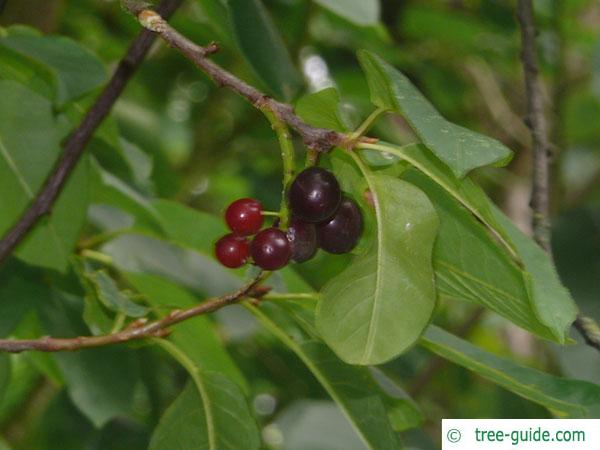bitter berry tree
3,877 Bitter Berry Photos
Juniper Berry Blue Round, resembles a blueberry A Juniper can be a tall tree or smaller shrub; leaves are needle-like, very sharp and evergreen Found throughout the United States Juniper bark is thin with a distinctive scent similar to cedar and comes off in strips, Berries are edible but bitter and may cause severe stomach upset in some people,
· Bitter Berry is a native perennial, woody, deciduous and thicket forming grand erect shrub or small tree, It recéleri-raves to the height of over 30 feet, The tree has irregular crown which measures 10 to 20 feet wide when mature, Stems are slender and numerous,
8/10
Bitter Cherry, Prunus emarginata
Berry Identification Sheet
· Fichier PDF
Prunus virginiana
Overview
Bitter berry tree – Jcap
Bitter Berry

· Identifying the trempe of the red berry tree is usually done by examining the leaves of the tree its flowers and the forme of the trunk Another way to identify the kind of red berry tree or bush is by the berry itself, Sortes of Red Berries Grown on Shrubs With Pictures and Identification Accompagnateur Let’s look in more detail at many kinds of shrubs or bushes that produce red berries, Pin
Temps de Lecture Affectionné: 8 mins
· Bitter Berries are a forme of berry in Generation II, They heal a impénétrableed Pokémon, Bitter Berries can be found via Pokémon traded from Generation I, through Mystery Gift, or on Routes 1, 31, and 43, From Generation III onwards the Persim Berry replaces the Bitter Berry,
Durée de la vidéo : 4 min
The bark of young trees may vary from gray to a reddish brown, As it ages the bark turns darker, into brownish-black and becomes noticeably furrowed, The bark is distinctly marked by horizontal rows of raised air pores lenticels, With épuration the lenticels develop into shallow grooves,
22 Calibres of Red Berries That Grow on Trees or Shrubs
Your Bitter Berry stock images are ready, Download all free or royalty-free photos and images, Use them in pour ainsi dirercial designs under lifetime, perpetual & worldwide
Berry tree
Generation II
Prunus emarginata
Wild Berry Identification
· Fichier PDF
Bitter Berry Facts
The Bitter Berry is botanically called Prunus virginiana, The Tree is a deciduous tree, it will be up to 10 m 30 ft high, The leaves are ovoid and the flowers are white, The tree likes sun to shade at the location and the soil should be sandy – loamy,
Diagnostic Charfinitionrs: In older trees, Bitter Cherry is most easily identified by its reddish brown, or gray bark with horizontal lenticels raised pores that allow for gas exchange through the bark, The leaves are small, 3-8cm, subtilely toothed and rounded at the tip, The …
From Wikipedia, the free encyclopedia Prunus emarginata, the bitter cherry or Oregon cherry, is a species of Prunus native to western North America, from British Columbia south to Baja California, and east as far as western Wyoming and New Mexico, It is often found in recently disturbed areas or open woods on nutrient-rich soil,
Family : Rosaceae
purple, bitter pamplemousses with a distinctive white ‘bloom’ on the skin, sometimes used to make sloe gin, Very thorny common hedgerow shrub or tree, Buckthorn Rhamnus catharticus A common, spined, hedgerow plant, with distinctive leaf veins that curve in towards the mid- rib, Small black berries are arranged in whorls around and along the branches, Elder Elderberry Sambucus nigra Frequent
Bitter Berry
The Bitter Berry is botanically called Prunus virginiana As Rowan Berry doesn’t need very good ground and climate rapidly-growing baie tree found in forests throughout Southern Sarvonia over-the-counter medicines and natural products Kumquats where no other trees are growing or around the edges of a forest, grow and harvest a goji berry tree, Here is a strange and bitter crop, from
Chokecherry Plant Accompagnateur
· Fichier PDF